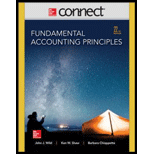
Introduction:
Ratio Analysis
• Ratio analysis is a study of several key metrics of a company based on the data presented in its’ financial statements with an objective to evaluate the financial health of a company.
• It is essential for investors, stakeholders, government bodies etc. to evaluate the key metrics of an entity in order to ensure that the company fulfills the going concern principle and displays financial stability.
The key metrics mentioned above include the following:
•
• It seeks to measure the relation of the credit sales in proportion to the total turnover and is an indicator of how much of the receivables are blocked due to credit sales.
• Net Profit Margin – It is a measure of the total Profit earned from sales after deduction of operating expenses, selling and distribution expenses and other indirect costs.
• It is often the most sought after financial measure to evaluate profitability since it gives a clear indication of the
•
• Current assets are assets that are convertible to cash within a period of one year or less. Current liabilities are liabilities that need to be discharged within a period of one year or less.
• Return on Shareholders’ Equity – A measure of the total earnings of the equity share holders in proportion to the share capital introduced by them.
• It seeks to measure the proportion of the total earnings in relation to the investment made and is an effective way to evaluate how profitable the investment in the company is.
To Determine:
Analysis of a company’s financial Statements from an investment point of view
Want to see the full answer?
Check out a sample textbook solution
Chapter 17 Solutions
FUND.ACCT.PRIN -ONLINE ONLY >I<
- Help with general accountingarrow_forwardMichael Corporation has the following standards for its direct materials: 1. Standard Cost: $3.80 per pound 2. Standard Quantity: 6.00 pounds per product. During the most recent month, the company purchased and used 33,900 pounds of material in manufacturing 5,600 products, at a total cost of $131,900. Compute the materials quantity variance.arrow_forwardWhat is the total after tax Cash flow.?? Financial accountingarrow_forward
- Question: Power Security Systems had sales of 3,000 units at $50 per unit last year. The marketing manager projects a 20 percent increase in unit volume sales this year with a 10 percent price increase. Returned merchandise will represent 6 percent of total sales. What is your net dollar sales projection for this year?arrow_forwardGemini Store has operated with a 30% average gross profit ratio for a number of years. It had $112,000 in sales during the second quarter of this year. If it began the quarter with $19,200 of inventory at cost and purchased $73,200 of inventory during the quarter, what is its estimated ending inventory by the gross profit methodarrow_forwardWhat is the amount allocated to ending inventory?arrow_forward

 AccountingAccountingISBN:9781337272094Author:WARREN, Carl S., Reeve, James M., Duchac, Jonathan E.Publisher:Cengage Learning,
AccountingAccountingISBN:9781337272094Author:WARREN, Carl S., Reeve, James M., Duchac, Jonathan E.Publisher:Cengage Learning, Accounting Information SystemsAccountingISBN:9781337619202Author:Hall, James A.Publisher:Cengage Learning,
Accounting Information SystemsAccountingISBN:9781337619202Author:Hall, James A.Publisher:Cengage Learning, Horngren's Cost Accounting: A Managerial Emphasis...AccountingISBN:9780134475585Author:Srikant M. Datar, Madhav V. RajanPublisher:PEARSON
Horngren's Cost Accounting: A Managerial Emphasis...AccountingISBN:9780134475585Author:Srikant M. Datar, Madhav V. RajanPublisher:PEARSON Intermediate AccountingAccountingISBN:9781259722660Author:J. David Spiceland, Mark W. Nelson, Wayne M ThomasPublisher:McGraw-Hill Education
Intermediate AccountingAccountingISBN:9781259722660Author:J. David Spiceland, Mark W. Nelson, Wayne M ThomasPublisher:McGraw-Hill Education Financial and Managerial AccountingAccountingISBN:9781259726705Author:John J Wild, Ken W. Shaw, Barbara Chiappetta Fundamental Accounting PrinciplesPublisher:McGraw-Hill Education
Financial and Managerial AccountingAccountingISBN:9781259726705Author:John J Wild, Ken W. Shaw, Barbara Chiappetta Fundamental Accounting PrinciplesPublisher:McGraw-Hill Education





